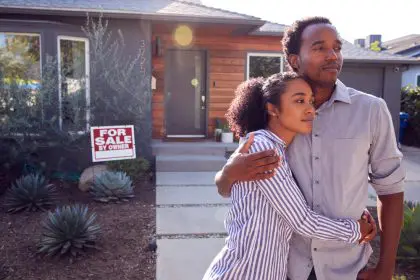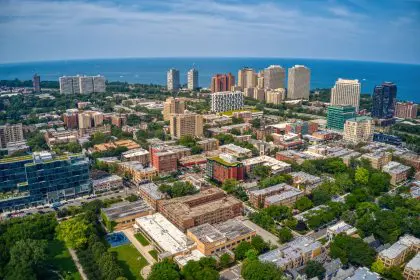For decades, Brooklyn’s dramatic transformation from overlooked outer borough to global cultural destination has been New York’s most compelling urban revitalization story. Yet just across the Hudson River, Newark is quietly writing an even more remarkable growth narrative. While Brooklyn’s popularity has translated into increasingly unaffordable prices, Newark has been building momentum with faster population growth, more dramatic property value increases, and a development pace that’s outstripping its more famous neighbor on a per-capita basis.
A close examination of data and development patterns reveals seven Newark neighborhoods where growth metrics now exceed comparable Brooklyn areas. With population increases more than triple Brooklyn’s overall rate and property value appreciation nearly three times higher, these Newark districts are redefining expectations for New Jersey’s largest city.
1. Downtown/Central Business District: Newark’s fastest-growing core
Newark’s Downtown district tops the list with an astounding 26.4% population growth in recent years – nearly eight times Brooklyn’s overall growth rate of 3.4%. This historic commercial center has evolved from a 9-to-5 business district into a vibrant mixed-use neighborhood where the resident population has grown from approximately 4,300 in 2000 to over 11,200 today.
The transformation centers around several landmark projects that have reimagined historic structures for 21st-century use. The Hahne & Co. building, once a vacant department store, now houses apartments, a Whole Foods Market, and arts spaces. The Four Corners Millennium Project has converted former office buildings into residential units, while Military Park has undergone a $3.5 million renovation that turned a neglected space into a community gathering place.
Newark’s position as a technology hub has accelerated downtown growth, supported by the Newark Fiber initiative providing some of the fastest and most affordable high-speed internet in the region. Major employers like Audible (an Amazon subsidiary), Prudential Financial, and Panasonic North America have made significant investments downtown, creating an employment base that supports residential growth.
The area’s median home price growth of 92.1% since 2017 exceeds comparable Downtown Brooklyn prices, which rose approximately 28% during the same period. Yet despite this growth, Downtown Newark remains dramatically more affordable, with price per square foot averages around $320, compared to Downtown Brooklyn’s $1,100+.
2. University Heights: Academic innovation driving growth
University Heights has emerged as Newark’s innovation corridor, experiencing 18.7% population growth fueled by expansion at multiple educational institutions. This northwestern section of Newark’s Central Ward has benefited from strategic investments by Rutgers-Newark, New Jersey Institute of Technology (NJIT), Essex County College, and University Hospital.
The neighborhood’s transformation has centered on connecting academic resources with community development. Rutgers-Newark’s $73 million Honors Living-Learning Community created not just student housing but also mixed-use spaces designed to engage with the neighborhood. NJIT’s ongoing campus expansion has added research facilities, technology centers, and student housing that has revitalized adjacent streets.
Unlike Brooklyn neighborhoods near educational institutions, which have often seen tension between university expansion and community preservation, University Heights has implemented inclusive development models. These include local hiring agreements, affordable housing provisions, and community-serving retail that benefits both student and non-student populations.
The medical sector has provided additional growth momentum, with University Hospital’s modernization efforts and the expansion of Rutgers Biomedical and Health Sciences creating high-skilled jobs within the district. These institutional anchors have supported median home price growth of 65.3% since 2017, with 18 major development projects completed or underway.
3. Ironbound: Cultural authenticity driving market appeal
The Ironbound district, east of Penn Station, has leveraged its authentic cultural character to achieve 15.3% population growth and 78.6% median home price increases since 2017. This historically Portuguese and Spanish neighborhood, now enriched with Brazilian and Central American influences, offers a distinct identity that many gentrified Brooklyn neighborhoods have struggled to maintain.
Ferry Street, the Ironbound’s commercial spine, showcases the neighborhood’s successful growth model: locally-owned restaurants, bakeries, and shops that attract both residents and visitors while preserving cultural authenticity. Unlike areas of Brooklyn where chain stores have replaced neighborhood businesses, the Ironbound has maintained its unique character while accommodating growth.
Transit connectivity has amplified the Ironbound’s appeal, with Newark Penn Station providing PATH service to Manhattan in approximately 20 minutes – faster than many Brooklyn commutes. This accessibility has attracted 24 new development projects, including both new construction and adaptive reuse of industrial buildings.
The Ironbound Square development and Textile Lofts conversion exemplify how the neighborhood has added housing while maintaining its architectural character. Meanwhile, the ongoing Riverfront Park expansion has improved access to the Passaic River, addressing past industrial use with new recreational opportunities.
4. North Ironbound: Waterfront redevelopment creating new opportunities
Extending northeast from the traditional Ironbound district, North Ironbound has leveraged proximity to the Passaic River to achieve 13.8% population growth and 75.2% increases in median home values. This formerly industrial area has particularly benefited from the phased development of Riverfront Park, which has converted once-inaccessible riverbanks into public space.
The Riverside Station development anchors the neighborhood’s transformation, creating transit-oriented housing that connects to both Newark Penn Station and the broader transportation network. Unlike Brooklyn’s waterfront developments, which typically command premium prices, North Ironbound’s riverside projects have maintained relative affordability while still delivering waterfront amenities.
The neighborhood’s industrial heritage has provided opportunities for creative adaptive reuse projects, with 19 significant developments completed or underway. Former manufacturing buildings have been converted to loft apartments, creative workspaces, and mixed-use developments that preserve architectural character while accommodating new uses.
North Ironbound’s growth pattern parallels early phases of Greenpoint’s transformation in Brooklyn, but with stronger affordability preservation measures and greater transportation infrastructure investment supporting development.
5. Lower Broadway: Creative conversions attracting makers and artists
Lower Broadway’s transformation from manufacturing district to creative hub has driven 14.2% population growth and 71.5% home price appreciation. This north Newark neighborhood has particularly benefited from the adaptive reuse of industrial buildings for both residential and workspace uses.
The Broadway Station development anchors the district’s growth, converting a former industrial complex into housing with ground-floor creative spaces. The area has attracted artists and makers priced out of both Brooklyn and Jersey City, establishing a creative community that has activated formerly vacant storefronts and industrial spaces.
Unlike similar districts in Brooklyn that saw rapid price escalation as creative communities took root, Lower Broadway has maintained a more measured growth trajectory that has preserved affordability for working artists and small-scale manufacturers. The neighborhood now hosts 16 significant development projects, with particular emphasis on spaces that combine living and working functions.
Symphony Hall provides cultural anchoring for the district, complemented by newer gallery spaces and performance venues that have established a cultural corridor. The neighborhood’s growth model emphasizes creative production rather than solely consumption, distinguishing it from Brooklyn areas that evolved primarily into residential districts with diminished creative output.
6. Fairmount: Community-led revitalization preserving diversity
Fairmount, located in Newark’s West Ward, has achieved 12.9% population growth through a development approach that emphasizes community preservation alongside physical improvements. This historically African American neighborhood has focused on equitable growth strategies that prevent displacement while improving housing quality and community amenities.
The Fairmount Heights mixed-income development exemplifies the neighborhood’s approach, replacing deteriorated housing with new construction that accommodates both existing residents and newcomers across income levels. Housing rehabilitation programs have improved the neighborhood’s historic housing stock while maintaining affordability, contributing to 73.8% median home price growth without widespread displacement.
Unlike rapidly gentrified Brooklyn neighborhoods that experienced demographic shifts alongside rising prices, Fairmount has maintained its cultural identity while accommodating growth. Community institutions like churches, schools, and cultural centers have been preserved and strengthened as neighborhood anchors rather than converted to new uses.
The neighborhood’s commercial corridor has seen targeted investment in locally-owned businesses, with community development financial institutions providing support for entrepreneurship. Fifteen major development projects have been completed or initiated, focusing on mixed-income housing, community facilities, and small business spaces.
7. Vailsburg: Single-family stability with strategic improvements
Vailsburg, on Newark’s western edge, rounds out the list with 11.4% population growth driven by improvements to this predominantly single-family neighborhood. Once an independent municipality annexed by Newark in 1905, Vailsburg has maintained its distinct identity while benefiting from strategic investments in community infrastructure.
Unlike Brooklyn neighborhoods dominated by multifamily housing, Vailsburg offers a suburban-like environment of detached homes and small apartment buildings within city limits. This housing stock has attracted families seeking more space than available in Brooklyn at dramatically lower price points, despite 68.9% median price appreciation since 2017.
The Vailsburg Park renovation has been a centerpiece of neighborhood improvement, creating enhanced recreational amenities that serve as community gathering spaces. The South Orange Avenue commercial corridor has seen targeted revitalization efforts focusing on neighborhood-serving businesses rather than destination retail.
Twelve significant development projects have focused on infill housing, commercial corridor improvements, and community facilities that complement the existing neighborhood character. Unlike Brooklyn neighborhoods where new development often contrasts sharply with existing buildings, Vailsburg’s growth has emphasized contextual designs that reinforce neighborhood identity.
Newark’s growth advantages: What’s driving the boom
These seven neighborhoods share common advantages that have enabled them to outpace Brooklyn’s growth metrics despite the latter’s global brand recognition. Understanding these factors reveals why Newark represents one of the region’s most compelling urban revival stories.
First, Newark offers dramatic affordability advantages despite recent appreciation. The average price per square foot in growing Newark neighborhoods ($275) remains approximately one-third of Brooklyn’s average ($743). This price differential allows Newark developments to target a broader market of potential residents, including middle-income households increasingly priced out of Brooklyn.
Second, Newark benefits from exceptional transit connectivity that equals or exceeds many parts of Brooklyn. PATH service from Newark Penn Station reaches World Trade Center in 20-25 minutes – faster than commutes from many Brooklyn neighborhoods to Midtown. NJ Transit provides rail connections throughout the region, while Newark Liberty International Airport offers global connectivity unavailable in Brooklyn.
Third, Newark has leveraged institutional anchors more effectively than many Brooklyn neighborhoods. The concentration of universities, medical centers, cultural institutions, and corporate headquarters provides economic foundations that support residential growth. The $190 million renovation of Newark Penn Station and $2.7 billion Newark Liberty International Airport terminal replacement represent infrastructure investments that further strengthen these foundations.
Fourth, Newark has implemented more effective affordability preservation strategies than most Brooklyn neighborhoods. Inclusionary zoning requirements, community benefits agreements with major developers, and strategic use of public land have maintained economic diversity even as market prices rise. This has allowed neighborhoods to improve without completely displacing existing communities.
Finally, Newark’s development pipeline operates with fewer constraints than Brooklyn’s. The city’s pro-growth policies, available land, adaptable industrial buildings, and streamlined approval processes have resulted in per-capita development rates nearly four times higher than Brooklyn (0.0126 new construction permits per resident in Newark versus 0.0034 in Brooklyn).
Comparing growth patterns: Newark versus Brooklyn
The growth trajectories of these seven Newark neighborhoods offer interesting contrasts with Brooklyn’s development patterns over the past two decades. While both cities have experienced revival, Newark’s transformation demonstrates distinct characteristics.
Newark’s growth remains more balanced between housing production and job creation than Brooklyn’s predominantly residential evolution. The expansion of employers like Audible, Mars Wrigley, and Prudential Financial has created an employment base that supports housing demand without requiring Manhattan commutes.
Development in Newark has featured greater adaptive reuse of historic buildings rather than demolition and replacement. The preservation of architectural heritage in projects like the Hahne & Co. building renovation has maintained neighborhood character while accommodating new uses – something many Brooklyn neighborhoods struggled to achieve during rapid redevelopment.
Newark’s revival has involved greater racial and economic diversity than Brooklyn’s transformation. While Brooklyn’s growth often shifted neighborhood demographics dramatically, Newark’s development patterns have generally maintained existing community composition while accommodating newcomers.
Infrastructure investments have preceded or accompanied Newark’s growth rather than lagging behind development. Transportation improvements, park expansions, and public space enhancements have been integral to neighborhood revival rather than afterthoughts necessitated by increased density.
Challenges and sustainability concerns
Despite impressive growth metrics, Newark’s neighborhoods face challenges that will determine whether their current trajectories remain sustainable. Understanding these issues provides perspective on potential limitations to the city’s remarkable growth story.
First, public education improvements remain critical for attracting and retaining families. While charter schools and select magnet programs demonstrate excellence, broader school system improvements are necessary to sustain neighborhood growth beyond young professionals and empty nesters.
Second, environmental remediation of former industrial sites requires ongoing investment. Many development opportunities require addressing contamination from past manufacturing uses before housing or commercial construction can proceed.
Third, balancing growth with anti-displacement measures requires continued attention. While Newark has implemented stronger affordability preservation policies than many Brooklyn neighborhoods, rising prices nevertheless create pressure on lower-income residents.
Fourth, changing perceptions of Newark requires overcoming decades of negative stereotypes. Despite dramatic safety improvements and quality of life enhancements, outdated impressions of the city continue to influence potential residents and businesses evaluating relocation.
Finally, infrastructure modernization beyond showcase projects requires sustained investment. Water system upgrades, stormwater management improvements, and street redesigns are less visible than signature developments but equally important for long-term growth.
The future outlook: Newark’s next growth phase
As these seven neighborhoods continue outpacing Brooklyn’s growth metrics, their evolution offers insights into greater Newark’s potential trajectory. Several factors suggest the city’s renaissance has sustainable momentum rather than representing a temporary surge.
The $2.7 billion Newark Liberty International Airport terminal replacement, currently underway, will significantly enhance the city’s global connectivity and create additional development opportunities in adjacent areas. The $190 million Newark Penn Station renovation will further strengthen transit infrastructure that already exceeds many Brooklyn neighborhoods’ connectivity.
Educational institutions continue expanding their footprints and programs, with Rutgers-Newark, NJIT, and Essex County College all implementing campus development plans that will increase student populations and create additional housing demand. Planned expansions at University Hospital and other medical facilities will generate new employment opportunities supporting residential growth.
Arts and cultural institutions like NJPAC (New Jersey Performing Arts Center) have expansion plans that will enhance Newark’s position as a cultural destination. The Newark Museum of Art’s ongoing programming has increased the city’s profile as an arts center, attracting creative professionals who previously might have exclusively considered Brooklyn.
Newark’s fiber optic infrastructure, providing some of the fastest internet speeds in the region at competitive prices, creates advantages for both businesses and residents increasingly dependent on digital connectivity. This technological foundation supports continued growth in tech sector employment and remote work opportunities.
Most significantly, Newark’s remaining development capacity exceeds Brooklyn’s increasingly limited opportunities. Available land, adaptable industrial buildings, and development-friendly policies create growth potential that Brooklyn’s mature real estate market can no longer match.
For residents seeking urban amenities, cultural diversity, historic architecture, and Manhattan access at price points Brooklyn no longer offers, these seven neighborhoods represent compelling alternatives to New York’s most popular borough. Their continued evolution demonstrates that the region’s urban renaissance has expanded beyond its traditional boundaries into new territories with distinct advantages for this growth phase.










